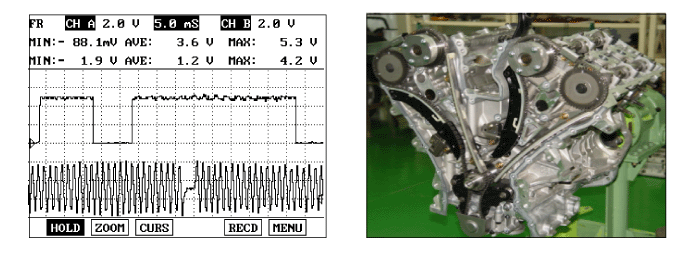Check Timing
Ignition "OFF"
Check that Cam, Crank and Oil pump sprocket timing marks are correctly in alignment
Monitor these signal waveforms from CAM and Crank shaft position Sensor are correctly in alignment

Are all timing marks alligned correctly ?
YES
▶ Go to "Check Fuel Pressure Test" as below
NO
▶ Repair or readjust as necessary and go to "Verification of Vehicle Repair" procedure
